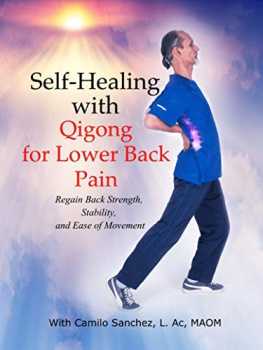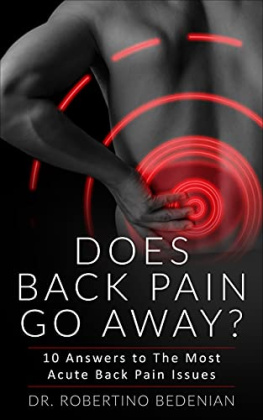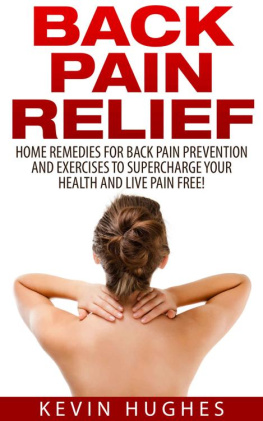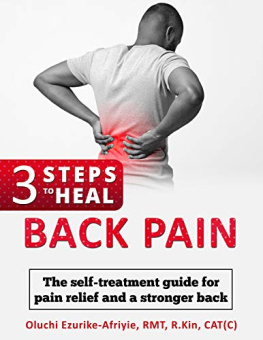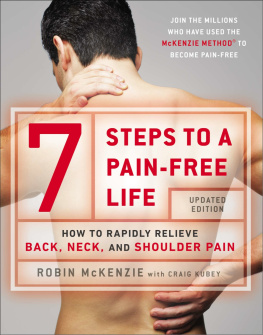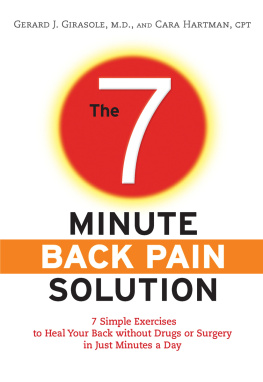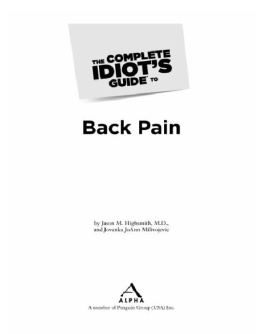Copyright 2018 by Dana Santas
No part of this publication may be reproduced, stored in a retrieval system or transmitted in any form or by any means, electronic, mechanical, photocopying, recording, scanning or otherwise, except as permitted under Sections 107 or 108 of the 1976 United States Copyright Act, without the prior written permission of the Publisher. Requests to the Publisher for permission should be addressed to the Permissions Department, Althea Press, 6005 Shellmound St, Suite 175, Emeryville, CA 94608.
Limit of Liability/Disclaimer of Warranty: The Publisher and the author make no representations or warranties with respect to the accuracy or completeness of the contents of this work and specifically disclaim all warranties, including without limitation warranties of fitness for a particular purpose. No warranty may be created or extended by sales or promotional materials. The advice and strategies contained herein may not be suitable for every situation. This work is sold with the understanding that the Publisher is not engaged in rendering medical, legal, or other professional advice or services. If professional assistance is required, the services of a competent professional person should be sought. Neither the Publisher nor the author shall be liable for damages arising herefrom. The fact that an individual, organization, or website is referred to in this work as a citation and/or potential source of further information does not mean that the author or the Publisher endorses the information the individual, organization, or website may provide or recommendations they/it may make. Further, readers should be aware that websites listed in this work may have changed or disappeared between when this work was written and when it is read.
For general information on our other products and services or to obtain technical support, please contact our Customer Care Department within the United States at (866) 744-2665, or outside the United States at (510) 253-0500.
Althea Press publishes its books in a variety of electronic and print formats. Some content that appears in print may not be available in electronic books, and vice versa.
TRADEMARKS: Althea Press and the Althea Press logo are trademarks or registered trademarks of Callisto Media Inc. and/or its affiliates, in the United States and other countries, and may not be used without written permission. All other trademarks are the property of their respective owners. Althea Press is not associated with any product or vendor mentioned in this book.
photography istockphoto, 2018
Author photograph Aaron Lockwood/Lockwood Studios, 2018
ISBN: Print 978-1-93975-434-9
eBook 978-1-93975-435-6
R1
A s the Mobility Maker, a mind-body coach in professional sports, Im probably one of the last people anyone would expect to have suffered from back pain. In fact, teams and athletes often hire me to create programs for alleviating and preventing back pain.
Yet, like you, and the other 80 percent of the population who has suffered from back issues, Ive felt your pain. I know what its like to hurt so much that you question if youll ever be able to perform everyday tasks pain-free, like bending down to tie your shoes or picking up your child. You are not alone. According to a recent Consumer Reports survey, one in four people have had an episode of back pain that severely interfered with their daily life.
For the athletes reading this, Im also familiar with the performance-hampering anxietyeven depressionyou must overcome after a back injury to return to play. The treatment and prevention of back pain is not only a large part of my career, its also personal. My experience from both perspectives has enabled me to identify the most efficient and effective ways to relieve current, and prevent future, back pain. As a result, this book includes easy-to-follow, practical solutions designed to empower readers experiencing back pain to take a proactive approach to relief.
But before I jump right into the solutions, you might be wondering how I ended up with back pain. Thats a fair question. As I discuss in greater detail in , back pain can have numerous causes, from a traumatic event or illness to simply feeling that we moved wrong. And those of us whove experienced a serious bout of back pain are 80 percent more likely to experience another. I am no exception. The first time I experienced an acute back issue was in my mid-twenties. At the time I worked in corporate America, and, like many stressed-out workers, I turned to yoga. Although Id spent several sedentary years behind a desk and hadnt exercised regularly since I was a high school gymnast, my ego believed I could jump into advanced yoga practice because of my previous athletic background. Consequently, after a couple of months forcing extreme backbends and twists I hadnt done in over a decade, I herniated two lumbar discs.
I want to be clear that yoga did not hurt me . I hurt myself by leading with my ego and not listening to my body. I went full throttle into the physical practice of yoga without working on the mind-body connection aspect, which research shows is a beneficialif not the most beneficialpart of any yoga practice.
Because I didnt know then what I know now (and you will learn from this book), I believed my only course of action was to take the Vicodin my doctor prescribed and passively wait until the pain subsided and my mobility returned. But after about ten days of going stir-crazy in bed, and still in pain, I instinctively felt I needed to do something to help my body heal and help me get back to my life.
As counterintuitive as it seemed to return to the scene of the crime, I went back to my yoga mat. But this time I practiced only gentle movements and meditative techniques to help me regain a sense of body awareness and reduce the fear and stress I was experiencing in response to the pain. After only a few sessions, with an increased mind-body connection and decreased pain, I was able to progress my exercises over a month until I was finally pain-free. Unsurprising to me, a study published in JAMA: The Journal of the American Medical Association in 2016 found that mindfulness-based stress reduction techniques are more effective at relieving pain and restoring function than pain medication.
As horrible as it was to hurt my back, it was undeniably a valuable, life-changing experience. I was inspired to learn more about the profoundly effective mind and body exercises that enabled me to feel better and that eventually led to my career as the Mobility Maker in pro sports, my role as the yoga expert for CNN, and, of course, the author of this book.
All of that said, sometimes, even when we know better, we still make painful mistakes. Thats exactly what happened when I reinjured my back two years ago, 14 years after the first incident. By then, having spent more than a decade working in pro sports as a mind-body coach as well as a certified strength and conditioning specialist, my own exercise program had evolved to include weight training. My favorite weight-training exercise was, and still is, the deadliftbending over a heavily weighted bar and using a hip-hinging movement to lift it. Weighing in at 105 pounds, I was quite proud of my ability to lift 210 pounds, double my body weight.



